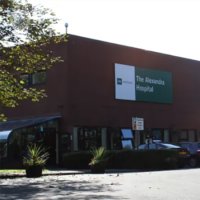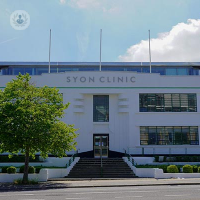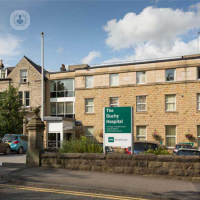What is robotic-assisted surgery?
Robotic-assisted surgery, or robotic surgery, using the da Vinci System, the Mako system by Stryker, among other systems, allows surgeons to perform surgical procedures in a very accurate way. Operations are performed with more precision, flexibility and control, compared to using conventional techniques. Robotic-assisted surgery is commonly associated with minimally invasive surgery, where procedures are performed using tiny incisions.

How does robotic-assisted surgery work?
Robotic-assisted surgery uses a camera arm and mechanical arms with surgical instruments attached to them. The surgeon is, as a direct result, able to control the arms whilst seated at a computer console near the operating table.
The surgeon has a high-definition 3D view of the surgical site and leads other team members who assist them during the surgery. The surgeon makes small cuts to insert the instruments in the patient’s body. A thin tube with a camera attached to the end of it, (just like an endoscopy), enables the surgeon to view enlarged 3D images of the patient’s body during the surgery. The robot corresponds and matches the hand movements of the doctor to perform the procedure using tiny instruments.
What is robotic-assisted surgery mainly used for?
There are many surgical procedures where robotic-assisted surgery is used. The main ones include the following:
- cardiac surgery
- colorectal surgery
- general surgery
- gynaecological surgery
- head and neck surgery
- thoracic surgery
- urological surgery
What are the advantages and risks of robotic-assisted surgery?
Surgeons who use the robotic system find that, for many procedures, it enhances control during the operation, and allows them to see the site more clearly. The benefits of minimally invasive surgery include:
- fewer complications, such as infections
- reduced blood loss and transfusions
- reduced pain and discomfort
- quicker recovery time – shorter hospitalisation and faster return to normal activities
- less noticeable scars
Despite having many benefits, robotic-assisted surgery also has its fair share of small risk factors, which may be similar to those of conventional open surgery. The main potential risks could include:
- infections
- bleeding
- mechanical failure
Who are ideal candidates for robotic-assisted surgery?
The ideal patient for the robotic-assisted procedure is someone who has not had many abdominal surgeries. Typical abdominal surgeries such as an appendectomy, gallbladder removal, and hernia repair, do not exclude individuals from having robotic surgery. The decision will be made by the surgeon. Patients with prevalent cardiovascular and pulmonary diseases may require more consideration beforehand.
How long does it take to recover from robotic-assisted surgery?
Traditional open surgery recovery time can last several months, including several days of hospitalisation. Even though every case of surgery is unique, the return to everyday activities for a patient following robotic-assisted surgery can occur in as little as two to three weeks.
11-13-2012 04-05-2024Robotic surgery
Professor Lee Jeys - Orthopaedic surgery
Created on: 11-13-2012
Updated on: 04-05-2024
Edited by: Conor Dunworth
What is robotic-assisted surgery?
Robotic-assisted surgery, or robotic surgery, using the da Vinci System, the Mako system by Stryker, among other systems, allows surgeons to perform surgical procedures in a very accurate way. Operations are performed with more precision, flexibility and control, compared to using conventional techniques. Robotic-assisted surgery is commonly associated with minimally invasive surgery, where procedures are performed using tiny incisions.

How does robotic-assisted surgery work?
Robotic-assisted surgery uses a camera arm and mechanical arms with surgical instruments attached to them. The surgeon is, as a direct result, able to control the arms whilst seated at a computer console near the operating table.
The surgeon has a high-definition 3D view of the surgical site and leads other team members who assist them during the surgery. The surgeon makes small cuts to insert the instruments in the patient’s body. A thin tube with a camera attached to the end of it, (just like an endoscopy), enables the surgeon to view enlarged 3D images of the patient’s body during the surgery. The robot corresponds and matches the hand movements of the doctor to perform the procedure using tiny instruments.
What is robotic-assisted surgery mainly used for?
There are many surgical procedures where robotic-assisted surgery is used. The main ones include the following:
- cardiac surgery
- colorectal surgery
- general surgery
- gynaecological surgery
- head and neck surgery
- thoracic surgery
- urological surgery
What are the advantages and risks of robotic-assisted surgery?
Surgeons who use the robotic system find that, for many procedures, it enhances control during the operation, and allows them to see the site more clearly. The benefits of minimally invasive surgery include:
- fewer complications, such as infections
- reduced blood loss and transfusions
- reduced pain and discomfort
- quicker recovery time – shorter hospitalisation and faster return to normal activities
- less noticeable scars
Despite having many benefits, robotic-assisted surgery also has its fair share of small risk factors, which may be similar to those of conventional open surgery. The main potential risks could include:
- infections
- bleeding
- mechanical failure
Who are ideal candidates for robotic-assisted surgery?
The ideal patient for the robotic-assisted procedure is someone who has not had many abdominal surgeries. Typical abdominal surgeries such as an appendectomy, gallbladder removal, and hernia repair, do not exclude individuals from having robotic surgery. The decision will be made by the surgeon. Patients with prevalent cardiovascular and pulmonary diseases may require more consideration beforehand.
How long does it take to recover from robotic-assisted surgery?
Traditional open surgery recovery time can last several months, including several days of hospitalisation. Even though every case of surgery is unique, the return to everyday activities for a patient following robotic-assisted surgery can occur in as little as two to three weeks.
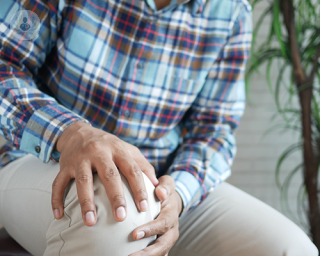

Robotic knee replacement: What you need to know
By Mr Juan Agustin Soler Fernandez
2024-11-06
Knee replacement surgery has evolved significantly over the years, with robotic knee replacement emerging as a cutting-edge option for patients with severe knee arthritis and knee pain. Here, Mr Juan Agustin Soler Fernandez, renowned consultant orthopaedic hip and knee surgeon, provides a comprehensive overview of robotic knee replacement, addressing key questions for patients considering this advanced surgical technique. See more


Robotic knee surgery versus traditional methods
By Mr Ash Gulati
2024-11-06
As technology is advancing more in our everyday lives, it is evolving how procedures are done in operating theatres. One of the more advanced in orthopaedics is robotic-assisted knee surgeries. Experienced consultant trauma and orthopaedic surgeon Mr Ash Gulati explains the newer procedure and how it compares to the traditional method. See more


Robotic hip surgery: an expert’s guide
By Mr Winston Kim
2024-11-06
Hip replacements are a fairly common procedure as people get older. Wear and tear in the hip can mean that the only option is to replace the ball and socket joint with a prosthetic. Now, this procedure can be done with the assistance of robotic technology. Mr Winston Kim explains the advantages of robotic-assisted hip surgery. See more
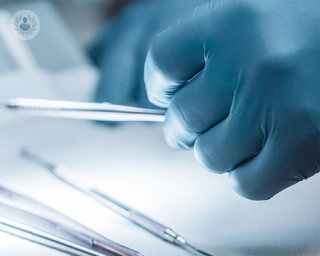

What you need to know about robotic hernia repair
By Mr Charles Evans
2024-11-06
A hernia is when an internal part of the body, like an organ, pushes through a weakness in the muscle or wall and then can be felt through the skin. Traditional methods of repairing hernias require large incisions, a long time to perform the surgery, and a long convalescence period for the patient. However, robotic assistance is an emerging innovation that can change how surgeries are performed. We spoke to Mr Charles Evans, an expert surgeon in hernias, about why robotic hernia repair is better than a traditional surgical procedure. See more
Experts in Robotic surgery
-
Professor Neil Tolley
Otolaryngology / ENTExpert in:
- Thyroid gland surgery
- Parathyroid gland surgery
- Robotic surgery
- Salivary gland surgery
- Parotid gland surgery
- Thyroid disorders
-
Mr Sean Molloy
Orthopaedic surgeryExpert in:
- Minimally invasive spinal surgery
- Scoliosis
- Spine fracture
- Robotic surgery
- Spinal surgery
- Spinal fusion
-
Mr Rahul Nath
Obstetrics & gynaecologyExpert in:
- Robotic surgery
- Abnormal smear test
- Cervical cancer
- Endometrial cancer
- Human papillomavirus (HPV)
- Ovarian cancer
-
Mr Ajit Abraham
SurgeryExpert in:
- Gallstones
- Pancreatic cancer
- Liver cancer
- Pancreatitis
- Hernia
- Robotic surgery
-
Mr Narendra Pisal
Obstetrics & gynaecologyExpert in:
- Abnormal smear test
- Endometriosis
- Fibroids
- Gynaecological cancer
- Laparoscopic hysterectomy
- Robotic surgery
- See all

The Alexandra Hospital - part of Circle Health Group
The Alexandra Hospital - part of Circle Health Group
Mill Ln, Cheadle
No existe teléfono en el centro.
By using the telephone number provided by TOP DOCTORS, you automatically agree to let us use your phone number for statistical and commercial purposes. For further information, read our Privacy Policy
Top Doctors

Syon Clinic - part of Circle Health Group
Syon Clinic - part of Circle Health Group
941 Great West Rd, Brentford TW8 9DU
No existe teléfono en el centro.
By using the telephone number provided by TOP DOCTORS, you automatically agree to let us use your phone number for statistical and commercial purposes. For further information, read our Privacy Policy
Top Doctors

The Duchy Hospital - part of Circle Health Group
The Duchy Hospital - part of Circle Health Group
Queen's Road, Harrogate HG2 0HF
No existe teléfono en el centro.
By using the telephone number provided by TOP DOCTORS, you automatically agree to let us use your phone number for statistical and commercial purposes. For further information, read our Privacy Policy
Top Doctors
-
The Alexandra Hospital - part of Circle Health Group
Mill Ln, Cheadle, CheadleExpert in:
- Hip
- Cardiology
- Shoulder and elbow
- Paediatrics
- Foot and ankle
- Knee
-
Syon Clinic - part of Circle Health Group
941 Great West Rd, Brentford TW8 9DU, West LondonExpert in:
- Allergies nose and ears
- Allergy Dermatitis
- Allergy
- Clinical analysis
- Anxiety
- Digestive
-
The Duchy Hospital - part of Circle Health Group
Queen's Road, Harrogate HG2 0HF, HarrogateExpert in:
- Cardiology
- General Surgery
- Plastic surgery, reconstructive and aesthetics
- Diagnostic Imaging
- Ophthalmology
- Otolaryngology
- See all
- Most viewed diseases, medical tests, and treatments
- Nipple discharge
- Abdominal pain
- Minimal access surgery (keyhole surgery)
- Head and neck cancer
- Neck lump
- Vaginal dryness
- Pelvic pain syndrome
- Maternal mental health
- Preconception care
- Kidney stones






